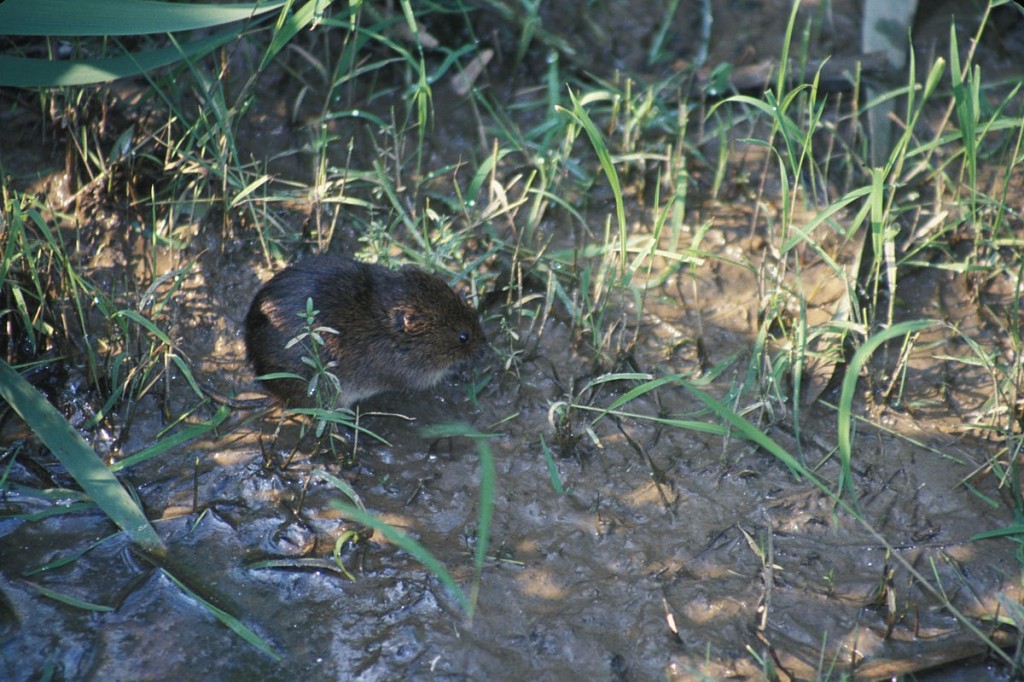Have you had trouble with voles over the past few years? Our harsh, snowy winters have created ideal environments for voles to thrive. Voles can wreak winter-time havoc on young trees, shrubs, perennials, and your lawn. Fall and early winter are the best times to implement controls for mitigating the damage these small creatures can do.
A vole is a small rodent resembling a mouse but with a stouter body, a shorter, hairy tail, a slightly rounder head, and smaller ears and eyes. Two species of voles reside in New York State: the meadow vole (Microtus pennsylvanicus) and the pine vole (Microtus pinetorum). You can read descriptions of each and more about their biology and habits in this Voles fact sheet on our website.
Hidden from predators, voles happily travel under snow cover, feasting on blades of grass and the bark of trees and shrubs. Voles like to gnaw around the circumference of woody plants until they are completely girdled. Once the snow melts, the damage is clear: long, 2-inch wide runways of beaten down, damaged turf grass, and woody plants that suddenly die after the first flush of spring growth.
Here are a few ways to deter voles and protect your plants by reducing their favorite winter habitats:
- Clean up piles of leaves and branches.
- Remove grass and weeds from around trees and shrubs (this area should be clear of grass anyway to prevent injury from mowers or line trimmers).
- Bare soil is ideal within the first few inches of ground that surround plant bark. At most, put only a very light layer of mulch there.
- Don’t mulch excessively in flower beds as this will favor vole activity.
- Before it snows, install fine-gauge hardware cloth around tree trunks to prevent voles from chewing young wood.
- Make your last lawn mow of the year slightly lower than normal to discourage voles from creating surface trails through longer grass. Lowering the mower deck to 3” works well.
If you find you need to control the population of voles on your property, try using snap-back mouse traps placed in boxes with holes on either side; this is one of the more effective control methods. Populations of voles tends to be highest in the fall and before our first snowfall, so act now!
Sandra Vultgaggio is Horticulture Consultant for CCE Suffolk. She can be reached by email at sib7@cornell.edu or by phone at 631-727-7850 x387.

